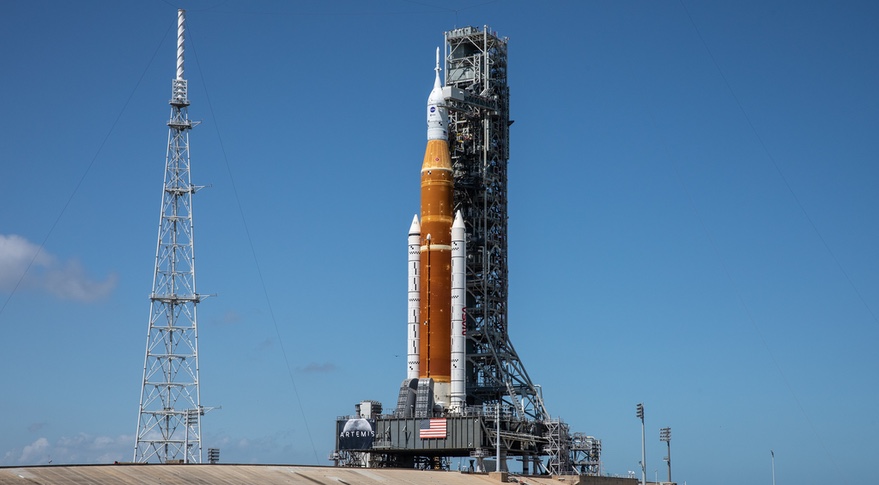WASHINGTON — NASA says it’s ready to go ahead with a practice countdown of the Space Launch System that will serve as a final key test before the rocket’s first launch, but one that will also take place largely out of public view.
In a March 29 call with reporters, NASA officials said preparations remain on track for the SLS wet dress rehearsal (WDR), where the rocket is filled with liquid hydrogen and liquid oxygen propellant and the countdown taken to just under T-10 seconds, shortly before the core stage’s four RS-25 engines would ignite. The WDR will test fueling and countdown procedures ahead of the Artemis 1 launch this summer.
The test will begin with a “call to stations” for personnel at about 5 p.m. Eastern April 1, said Charlie Blackwell-Thompson, NASA Artemis launch director. Tanking will start at around 7 a.m. Eastern April 3, entering the terminal part of the countdown seven and a half hours later. Controllers will take the vehicle first down to T-33 seconds then recycle to do another countdown to T-10 seconds. The test would end with detanking of the vehicle late that afternoon.
While technical preparations continue for the test, NASA will be keeping an eye on the weather. “There is some chance that we’ll have a little bit of inclement weather in this area over the weekend,” she said. The primary concern is lightning, with a requirement of no more than a 20% chance of lightning within 9.3 kilometers of the pad in the first hour of tanking.
If the test does go forward as planned, NASA expects to know fairly quickly how the vehicle performed and how soon it would be ready for launch. Tom Whitmeyer, deputy associate administrator for common exploration systems development, said the agency plans to hold a briefing April 4 with a first review of the results of the WDR.
“We’re looking for two things: to see if we were able to successfully get through the timeline and the count, and get the data that we need to be able to prepare for the launch of the vehicle,” he said of that briefing, “and we’ll also look at the condition of the vehicle.”
He said NASA won’t be prepared at that post-test briefing to set a launch date for Artemis 1, since there will be more work to inspect the vehicle and look for any issues that may need to be fixed before launch. “We’re hoping that in about a week after we’re done with all that,” he said, “we should be able to talk about what we’re looking for in terms of launch opportunities.”
He declined to speculate on potential launch dates. A launch window is available May 7 to 21, but its considered unlikely the SLS would be ready before that window closes since the vehicle first has to roll back to the Vehicle Assembly Building for final closeout work before returning to the pad before launch. The next launch window is June 6 to 16, followed by June 29 to July 12.
While Whitmeyer and others described WDR as the final major test before the Artemis 1 launch, NASA will provide little coverage of the test itself. The agency said March 28 that it will provide a live video feed of the pad during the test, but without any commentary or sound, including audio from launch control.
Whitmeyer said the lack of audio from launch control was in response to export control concerns. “Typically what they’re looking for is timing and sequencing data,” he said. “That’s considered to be important information by other countries, so we have to be very careful when we share data, particularly for the first time.”
That took many people by surprise, since there were not similar restrictions on controller audio during shuttle launches and tests; the SLS makes extensive use of shuttle-era hardware. “We’re really, really super sensitive to cryogenic launch vehicles of this size and capability. They’re very analogous to ballistic-type capabilities that other countries are very interested in,” he said. However, it’s rare for ballistic missiles to use cryogenic propellants given the extensive time and effort needed to prepare such vehicles for launch.
He said NASA would provide updates on social media during the test and promised to provide a detailed guide to the countdown to media in advance. “They’re going to practice the whole thing they’re going to have for launch in parallel,” he said, so that by the time of the actual launch this summer NASA will be able “to provide the normal type of calls that you would expect to hear.”
